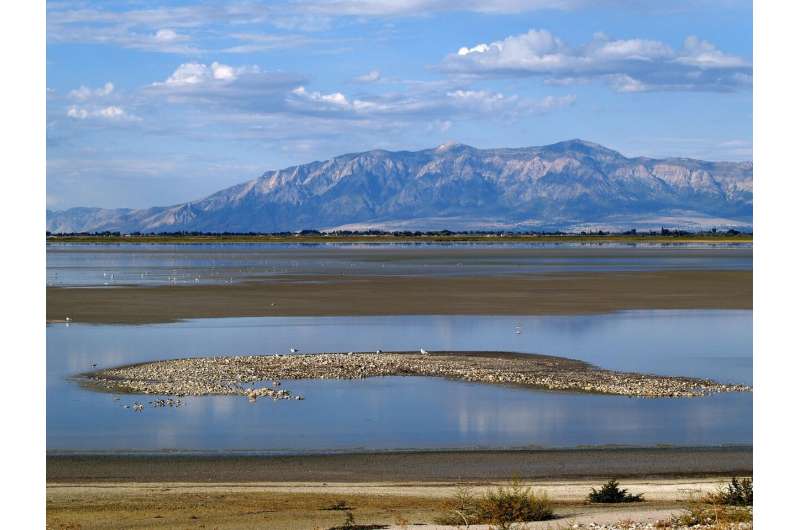This article has been reviewed according to Science X's editorial process and policies. Editors have highlighted the following attributes while ensuring the content's credibility:
fact-checked
trusted source
proofread
How does a drying Great Salt Lake affect carbon cycling?

As water levels at the lake continue to decline, the complex natural systems the lake supports are shifting, too. Ecohydrologist Erin Rivers from the Quinney College of Natural Resources is investigating how shifting water levels at the Great Salt Lake are altering the way it captures and stores carbon.
The lakebed sprawls across 1,700 square miles of land—so even small tweaks in the chemistry, botany and biology of this system inevitably create exponential impacts, especially if the ecosystem becomes a net source of carbon to the atmosphere.
Lakes generally play an outsized role in carbon cycling, either acting as net sources of carbon or working as carbon sinks (pulling carbon from the atmosphere and storing it in ways that don't further exacerbate global warming).
Surprisingly little information is known about how a massive, salty body of water like the Great Salt Lake fits into this equation, let alone how that will shift during sustained drought. Rivers is working on research that will give managers a better picture of how the drying lake will impact a drying and warming world.
Provided by Utah State University





















